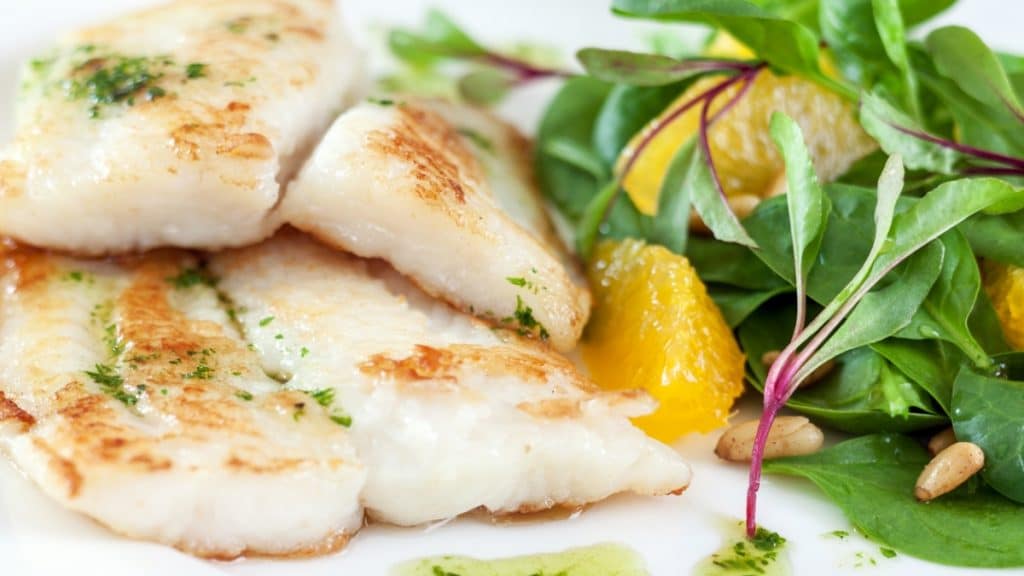Cooking seafood is a delicate art, one that requires an understanding of its unique structure and how it reacts to heat. Unlike red meat or poultry, seafood has a different composition, making it easier to overcook or dry out. By understanding the science behind seafood cooking, you can elevate your dishes and avoid common mistakes. Unless you wish to eliminate the hassle of cooking seafood on your own, you should look for best sea food restaurant near me.
Here’s a breakdown of the key scientific principles you need to know to perfect your seafood cooking.
1. Understanding the Structure of Seafood
One of the most important things to know about seafood is its unique structure. Fish and shellfish have a very different muscle composition compared to land animals.
Key Points:
- Low Collagen Content: Fish have less collagen (the protein that toughens meat) compared to beef or chicken. This is why seafood cooks faster and why it becomes tough and rubbery if overcooked.
- Delicate Muscle Fibers: Fish muscle fibers are much shorter and thinner. They’re separated by thin sheets of connective tissue, which break down at lower temperatures. This is why fish flakes easily when cooked, unlike the denser, chewier texture of red meat.
- High Water Content: Seafood has a higher percentage of water compared to other meats. This makes it juicy but also more prone to drying out when overcooked.
Understanding the structure of seafood helps you cook it to the right texture, ensuring it stays moist and flavorful.
2. The Role of Temperature in Cooking Seafood
Cooking seafood to the correct temperature is key to preserving its texture and flavor. Overcooking is a common mistake, resulting in tough, dry, and flavorless fish.
Ideal Temperatures for Different Seafood:
- Fish: Fish is generally best when cooked to an internal temperature of 125-140°F, depending on your preference for doneness. Salmon, for example, is often enjoyed at 120-130°F for a medium-rare texture.
- Shrimp and Scallops: Both are fully cooked when their internal temperature reaches 120-130°F. Shrimp turn pink and opaque, while scallops develop a golden-brown crust.
- Lobster and Crab: Lobster and crab are fully cooked when their internal temperature reaches 135-140°F. The flesh turns from translucent to opaque white.
Using a food thermometer helps you cook seafood precisely, avoiding undercooking or the more common problem of overcooking.
3. Moisture Retention: Why Seafood Dries Out Quickly
Seafood dries out faster than land-based meats, and that’s primarily because of its high water content. When heated, the moisture in the seafood evaporates quickly, leading to dryness and a chewy texture if not managed properly.
Tips for Moisture Retention:
- Use Lower Heat: Cooking seafood over high heat can quickly dry it out. Instead, opt for medium to medium-high heat to allow for more even cooking.
- Moisture-Rich Cooking Methods: Cooking techniques like poaching, steaming, or wrapping seafood in foil (en papillote) help retain moisture. These methods create a gentle environment, trapping steam and locking in moisture.
- Butter or Oil Basting: For grilling or pan-searing, most chefs at seafood restaurant in Suffolk VA, baste the seafood with melted butter or oil to keep it moist and develop a rich flavor.
Moisture retention is critical for maintaining seafood’s delicate texture and preventing it from becoming tough.
4. The Maillard Reaction and Seafood
The Maillard reaction is the chemical reaction between amino acids and sugars that gives browned food its distinct flavor. While the Maillard reaction is most commonly associated with meats like steak, it also plays a role in cooking seafood.
How to Achieve the Maillard Reaction with Seafood:
- High-Heat Searing: To develop a crispy, golden crust on the outside of your fish or scallops, use high heat to sear. This quick cooking method produces the Maillard reaction, creating a caramelized, flavorful exterior while keeping the inside tender.
- Dry the Surface: Pat seafood dry before cooking. A wet surface prevents browning because moisture must evaporate before the Maillard reaction can take place.
- Use the Right Fat: Cooking seafood in butter or oil enhances browning and adds richness to the flavor.
By maximizing the Maillard reaction, you can add complexity to the flavor profile of your seafood.
5. The Importance of Timing
Timing is everything when cooking seafood. Due to its delicate nature, seafood cooks quickly, and even a minute too long can lead to overcooked, rubbery textures.
Cooking Time Tips:
- Know Your Cuts: Thicker cuts of fish like salmon or tuna steaks require a few more minutes of cooking time compared to thinner fillets like flounder or tilapia.
- Cook to the Visual Cues: For fish, look for opaque flesh and flaking. Shrimp and lobster turn pink and scallops develop a firm, golden crust when they’re done.
- Carryover Cooking: Remove seafood from heat slightly before it reaches the desired doneness, as it will continue to cook slightly from residual heat.
Perfecting timing ensures your seafood remains juicy and tender, with the ideal texture.
Conclusion
Cooking seafood may seem daunting due to its delicate nature, but understanding the science behind it can take your culinary skills to the next level. By paying attention to temperature, moisture retention, and cooking techniques like searing, you can create perfectly cooked, flavorful seafood dishes every time. With the right knowledge and careful execution, you’ll master the art of cooking seafood while impressing your guests with dishes that highlight the best of what the ocean has to offer.
